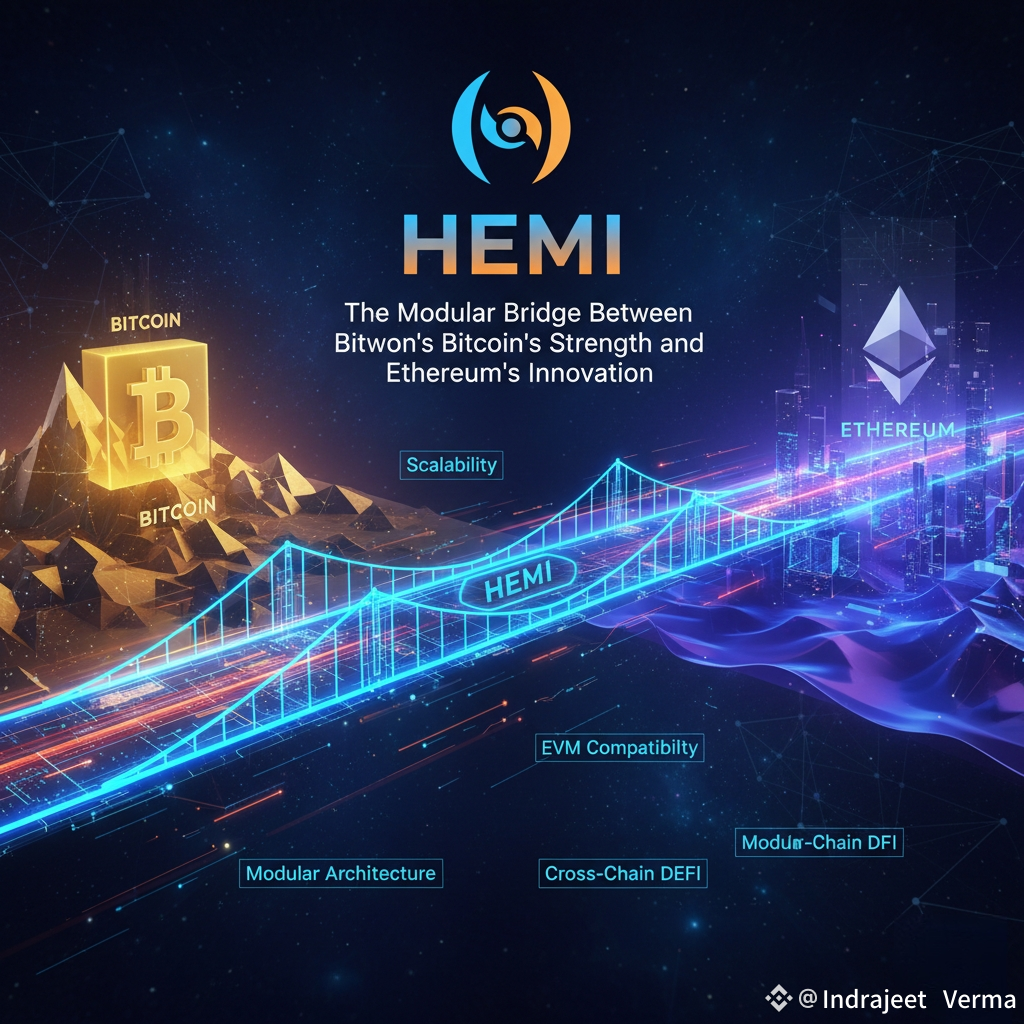
The evolution of blockchain has reached a point where true scalability and interoperability are no longer optional — they are essential. Networks today struggle to deliver low fees, high throughput, and seamless cross-chain connectivity, forcing developers to choose between speed and decentralization. HEMI breaks this limitation with a new modular Layer-2 architecture that unites the best of both worlds: Bitcoin’s unmatched security and Ethereum’s powerful programmability.
At its core, HEMI represents a shift in how blockchains are designed. Instead of one monolithic structure trying to handle everything, HEMI separates critical components like execution, settlement, and data availability into specialized modules. This separation gives developers the freedom to build, optimize, and upgrade without risking the network’s integrity — making HEMI one of the most flexible and future-ready infrastructures in Web3.
The foundation of HEMI’s security lies in Bitcoin. Every Layer-2 transaction is anchored through its Proof-of-Proof (PoP) mechanism, which ties block finality directly to Bitcoin’s ledger. This ensures that even as transactions move at lightning speed on HEMI’s network, their final validation remains as secure as Bitcoin itself — immutable, verifiable, and tamper-resistant.
On the execution side, HEMI integrates full Ethereum Virtual Machine (EVM) compatibility. This allows developers to easily deploy existing smart contracts and dApps on HEMI without changing their codebase. What this means is that Ethereum’s massive developer ecosystem can instantly benefit from Bitcoin-level security and modular scalability, creating a truly unified environment for decentralized innovation.
Interoperability is another pillar of HEMI’s vision. In a world where liquidity, users, and applications are spread across dozens of isolated chains, HEMI creates the connective tissue that allows assets and logic to move freely. Cross-chain DeFi protocols, multi-chain NFT ecosystems, and Bitcoin-backed Web3 economies all become possible within HEMI’s ecosystem — reducing fragmentation and unlocking real cross-network collaboration.
HEMI’s modular framework also enables constant evolution. New technologies like zk-rollups, advanced data availability layers, and faster execution modules can be added over time without replacing the entire network. This approach ensures HEMI remains adaptive, efficient, and ahead of the curve as blockchain infrastructure continues to advance.
The HEMI token lies at the center of this ecosystem. It fuels transactions, powers staking and governance, and rewards validators who secure the network. By aligning economic incentives with network participation, HEMI ensures a sustainable growth model where both users and developers benefit equally.
Ultimately, HEMI isn’t just building a faster blockchain — it’s engineering a framework where every ecosystem can connect and grow together. By merging Bitcoin’s foundational strength with Ethereum’s creative flexibility, HEMI is setting the standard for the next generation of blockchain infrastructure: scalable, interoperable, and unstoppable.




